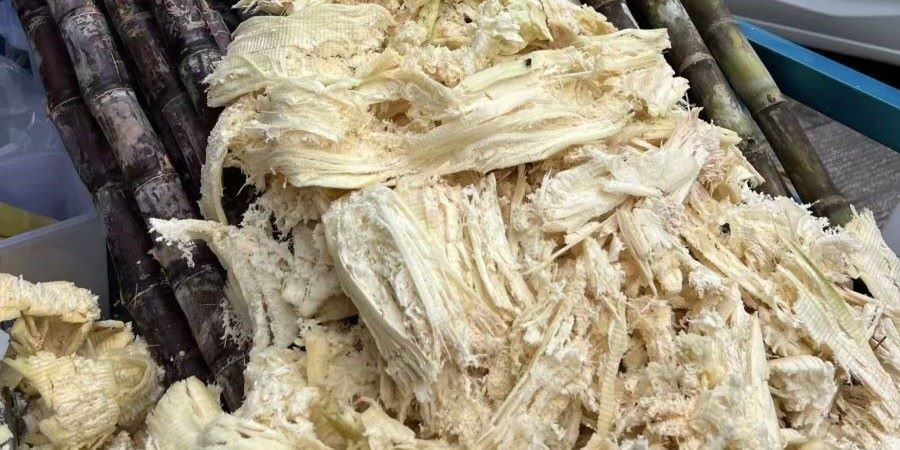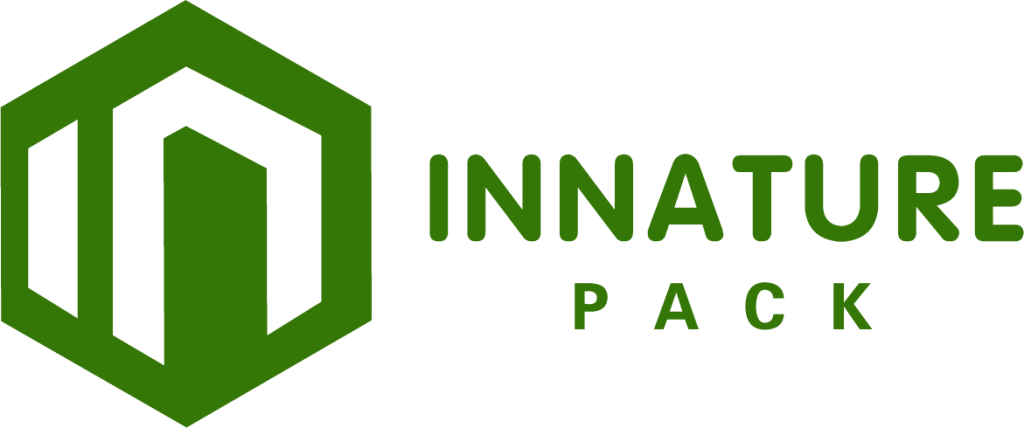Across the packaging and foodservice world, sugarcane bagasse is quietly reshaping how we think about disposables. Once a humble agricultural by-product, it has grown into a material symbolizing circularity, innovation, and responsible business.
This article explores how the bagasse market has developed worldwide — its scale, regional momentum, driving forces, and what these changes mean for companies aiming to build more sustainable supply chains.
From Waste to a Global Market

Only a decade ago, bagasse was viewed as little more than a fibrous waste left behind after sugarcane was crushed for juice. Mills often burned it for fuel or discarded it. Today, the story has changed dramatically.
Advances in molded pulp technology have turned this residue into a high-performance packaging material — one that’s renewable, compostable, and versatile. The transformation reflects a bigger global movement: consumers, governments, and brands aligning to replace single-use plastics with materials that fit within a circular economy.
Bagasse’s rise is more than a manufacturing story. It’s an example of resource efficiency — of industries finding value in what was once waste.
Global Market Snapshot
The sugarcane bagasse industry has moved from niche to mainstream, with growth data now tracked across multiple market segments. While estimates vary, they all point in one direction — steady and sustained global expansion.
- Bagasse Tableware (Future Market Insights, 2025–2035)
The bagasse tableware market — covering plates, bowls, clamshells, and cups — is projected to grow from USD 3.12 billion in 2025 to USD 5.87 billion by 2035, at a compound annual growth rate (CAGR) of around 6.5%.
This category primarily reflects food-service disposables and consumer-facing tableware. - Sugarcane-Based Packaging (Grand View Research, 2024–2030)
Separately, sugarcane-based packaging — a narrower segment focusing on protective and industrial molded packaging — is valued at approximately USD 351.6 million in 2024, with projections reaching USD 612.8 million by 2030 (CAGR ≈ 9.7%).
This dataset measures output largely at the manufacturer or “factory-gate” level rather than retail market value.
Although the packaging figure appears smaller than tableware, this is due to scope and valuation differences, not contradiction.
- The FMI dataset includes retail-level, high-volume products used in hospitality and catering.
- The GVR dataset captures a specific industrial packaging slice.
Taken together, these reports show sugarcane bagasse products are growing across both consumer and industrial segments, driven by regulatory pressure, improved performance, and accelerating adoption across foodservice, retail, and export markets.
Regional Market Insights
The demand for bagasse products isn’t distributed evenly. Each region’s pace reflects its policies, consumer culture, and industrial capacity.
1. Europe – Regulation Leads, Consumers Follow
Europe remains the regulatory frontrunner. The EU Packaging and Packaging Waste Regulation (PPWR) aims to ensure all packaging is reusable or recyclable by 2030, directly pressuring businesses to phase out plastics. Many EU states — including France, Italy, Spain, and Germany — have implemented bans on single-use plastics under the EU directive. While Spain has introduced a national plastic tax, other major economies like Italy and Germany have postponed theirs, relying instead on levies or extended producer responsibility schemes.
Bagasse tableware fits naturally within this framework. Foodservice chains and retailers increasingly specify EN13432-certified products. Sustainability is not only a value choice but a compliance requirement.
2. North America – Market Pull, Policy Push
In the United States and Canada, the movement is more decentralized but equally strong. States like California, New York, and Maine are enforcing bans on foam and polystyrene. At the same time, major food chains are voluntarily switching to fiber packaging as part of their ESG commitments.
According to industry surveys, more than half of North American consumers now associate “fiber-based” or “compostable” with quality and safety. This consumer sentiment reinforces the business case for bagasse.
3. Asia-Pacific – Fastest Growth and Supply Hub
Asia-Pacific is both the largest producer and fastest-growing consumer of bagasse packaging. Nations such as China, India, Thailand, and Vietnam combine abundant sugarcane output with rapidly expanding food delivery markets.
China, for example, not only consumes domestically but also exports molded pulp tableware worldwide. India’s push for “plastic-free July” and rising middle-class consumption further accelerate the regional market.
For global buyers, this region represents a reliable production base and a new wave of internal demand.
4. Australia & New Zealand – Small Markets, Big Ambitions
In Oceania, the Australian Packaging Covenant Organisation (APCO) targets 100% reusable, recyclable, or compostable packaging by 2025. State-level bans on plastic straws, cutlery, and EPS containers make bagasse the logical successor.
Although local sugarcane capacity is smaller than Asia’s, demand is strong enough that imports from Asia — help fill the gap.
Key Market Drivers
1. Global Plastic Bans and Taxation
Over 100 countries now regulate single-use plastics in some form. These restrictions, along with plastic taxes and landfill levies, are forcing industries to rethink materials. Bagasse offers compliance without sacrificing usability.
2. Corporate Sustainability & ESG Reporting
Public companies increasingly disclose packaging footprints. Switching to bagasse can directly contribute to CO₂ reduction targets and waste diversion metrics — tangible, reportable ESG wins.
3. Consumer Awareness
Sustainability is no longer a niche interest. According to McKinsey’s Sustainability in Packaging 2023 global survey, roughly two-thirds of consumers say sustainable packaging is at least somewhat important when making a purchase. Packaging type is seen as one of the clearest signals of a product’s sustainability, second only to its ingredients.
4. Circular Economy Logic
Unlike bioplastics that rely on dedicated crops, bagasse utilizes existing waste streams. It does not compete for farmland or food production. Instead, it adds value to agriculture and creates rural employment around pulp processing facilities.
These intertwined drivers make bagasse both an environmental and an economic opportunity.
Challenges and Constraints
Despite optimism, the bagasse industry faces real-world barriers.
- Cost and Price Competition: At small volumes, bagasse items can be 10–20% more expensive than plastic. Achieving parity depends on scaling production and building consistent demand.
- Infrastructure for Composting: Many regions still lack industrial composting systems. Without proper collection, compostable packaging may still end up in landfills.
- Certification Complexity: EN13432 and ASTM standards exist, but recognition differs by market, and testing adds cost.
- Supply Chain Volatility: Sugarcane harvests vary with weather patterns, affecting fiber supply. Diversifying sourcing regions is key for long-term stability.
- Perception Barriers: Some buyers still believe fiber can’t handle hot, oily foods — though modern molded pulp easily meets those demands.
The industry’s task is not just manufacturing better products, but educating markets on how and why they perform.
Business Opportunities & Implications
The beauty of bagasse lies in its versatility. From coffee shops to tech companies, its applications stretch beyond plates and cups.
- Foodservice and Catering: Takeaway and delivery growth show no sign of slowing. Compostable clamshells and bowls reduce the environmental impact of this booming sector.
- Retail and Private Labels: Supermarkets now sell prepared meals and fresh produce in molded fiber trays, giving shoppers a visible eco-option.
- Corporate Procurement: Offices, universities, and event venues are replacing disposable plastics with bagasse sets to meet internal sustainability targets.
- Industrial & Custom Packaging: Bagasse molded pulp protects electronics, cosmetics, and medical items — sectors looking to replace EPS foam.
In all these cases, early adopters gain market advantage. Aligning supply chains now avoids last-minute scrambles when new laws take effect.
Why Businesses Should Act Now
Sustainability is shifting from “nice to have” to license to operate. Delaying adoption of eco-friendly materials can expose businesses to regulatory risk and reputational damage.
By contrast, early movers gain:
- Regulatory readiness: meeting upcoming bans smoothly.
- Customer loyalty: today’s eco-conscious buyers reward genuine action.
- Operational resilience: diversified, renewable material sourcing buffers against fossil-based price shocks.
Bagasse offers a low-risk entry point into sustainable packaging because its technology is mature, its supply chain global, and its usability proven.
InNature Pack’s Role
At InNature Pack, we don’t just manufacture — we collaborate.
- Comprehensive range: bagasse plates, bowls, clamshells, trays, cups, and egg cartons.
- Compliance focus: EN13432 compostability, EU 2024/3190 bisphenols migration testing, FDA food-contact safety, PFAS-free options.
- Customization: printing, branding, sizing, and packaging tailored for wholesalers and distributors.
- Global reach: export expertise to Europe, North America, the Middle East, and Asia-Pacific.
- Sustainability at scale: large production capacity, stable raw material sourcing, and consistent quality control.
Our goal is to help businesses transition seamlessly from conventional packaging to fiber-based, compliant, and visually appealing alternatives.
Conclusion
The global market for sugarcane bagasse products is expanding — not because it’s fashionable, but because it’s practical. It aligns with regulation, reflects consumer values, and demonstrates corporate responsibility.
Whether you’re a wholesaler, retailer, or brand owner, understanding this momentum is the first step. The second is acting on it. Bagasse products are more than an eco-friendly substitute — they represent a forward-looking business strategy for a sustainable future.
Ready to explore how bagasse can fit your product line?
Contact InNature Pack for catalogs, samples, or a consultation on tailored sustainable packaging solutions.
